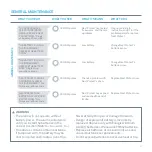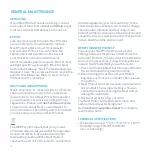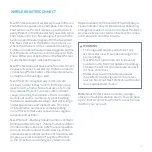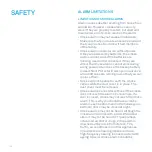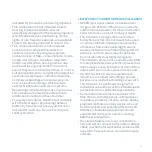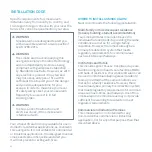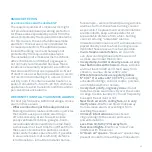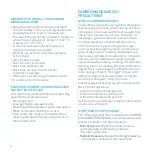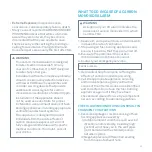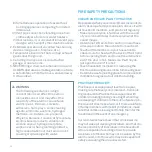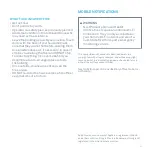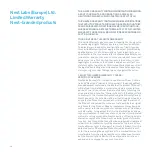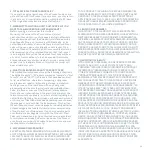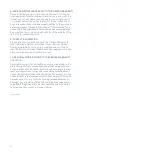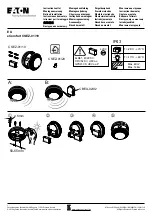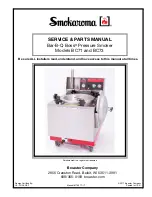
26
III) Simultaneous operation of several fuel-
burning appliances competing for limited
internal air
IV) Vent pipe connection vibrating loose from
clothes dryers, boilers or water heaters
V) Obstructions in, or unconventional vent pipe
designs, which amplify the situations above
2 Extended operation of unvented fuel-burning
devices (range, oven, fireplace, etc )
3 Temperature inversions that can trap exhaust
gases near the ground
4 Car idling in an open or closed attached
garage, or near a home
5 NEVER bring a charcoal barbecue inside, and
ALWAYS operate a portable generator outside,
a safe distance from the house, and well away
from windows
WARNING
The following substances in high
concentration can affect the carbon
monoxide sensor and may affect the
reliability of the alarm or cause false
alarms: paint, thinners, solvents,
adhesives, hair sprays, some cleaning
agents, ammonia, acetone, hydrogen
methane, iso-butane, iso-propanol,
ethylene, benzene, toluene, ethyl acetate,
alcohol-based products, volatile oils,
silicone vapour, hydrogen sulphide,
sulphuric acid, hair-grooming products,
high concentrations of dust and oil mist,
soaking or splashing with water
FIRE SAFETY PRECAUTIONS
CREATE AN ESCAPE PLAN TO PRACTISE
Be prepared when your smoke/CO alarm sounds its
alarm Develop a family escape plan, discuss it with
all household members, and practice it regularly
• Make sure everyone is familiar with the sound
of your smoke/CO alarm and explain what the
sound means
• Determine TWO exits from each room and have
an escape route to the outside from each exit
• Teach all the members in your household to
check doors for heat with the back of their hand
before opening them and to use the alternative
exit if the door is hot Make sure that they do
not open the door if it is hot
• Teach household members to crawl along the
floor to avoid dangerous smoke, fumes and gases
• Determine a safe meeting place for all household
members to regroup at outside the building
PRACTISE FIRE SAFETY
Practise your escape plan at least twice a year,
making sure that everyone is involved – from kids
to grandparents Practise the escape plan with
children, including holding one at night when they
are sleeping If children or others do not wake up to
the sound of the smoke alarm, or if there are infants
or family members with mobility limitations, make
sure that someone is assigned to help them for the
fire drill and in the event of an emergency
Current studies have shown that smoke alarms
may not wake all sleeping individuals, and that it is
the responsibility of individuals in the household
who are capable of assisting others to provide
assistance to those who may not be woken by the
alarm sound, or to those who may be incapable of
safely evacuating the area unassisted
Summary of Contents for A0124
Page 1: ...Nest Protect Battery Smoke and carbon monoxide alarm User Guide Let s get started ...
Page 2: ...2 ...
Page 31: ...31 ...






